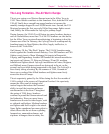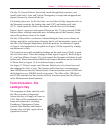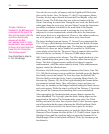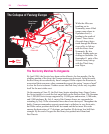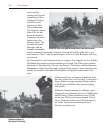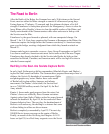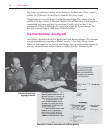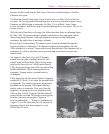
Chapter 7 The Big Picture: A Short History of World War II
159
American and Russian soldiers
The Road to Berlin
After the Battle of the Bulge, the Germans have only 26 divisions on the Second
Front; most are either far below strength or consist of old men and young boys.
Facing them are 57 infantry, 23 armored, and five airborne divisions, all at full
strength. Eisenhower’s three-phase plan calls for Montgomery’s forces to clear the
lower Rhine valley, Bradley’s forces to clear the middle reaches of the Rhine, and
finally encirclement of the German armies while other units race to link up with
the Soviets near the Elbe.
Eisenhower’s plan goes forward as planned, with one unexpected change. On
March 7, the U.S. First Army surprises the Germans at Remagen on the Rhine; the
Americans capture the bridge before the Germans can destroy it. American troops
pour over the bridge, creating a lodgment from which they launch an attack on
March 25.
German units begin to surrender en masse. Army Group B surrenders on April 18.
Less than a week later, American units meet Soviet units on the Elbe near Torgau.
Eisenhower has already decided to let the Soviets take Berlin; he believes that
casualties for British, Canadian, and American units will be too high if he tries to
take the German capital.
Red Sky in the East
the Soviets Capture Berlin
In early April, Stalin meets with his commanders (Marshals Koniev and Zhukov)
to plan the final assault on Berlin. The Germans have prepared three major lines of
defense; the Soviets fly hundreds of reconnaissance flights
and photograph every sector. Zhukov has a scale model
of Berlin built to plan artillery barrages and infantry
movements. On Zhukov’s front alone, the Soviets haul
in over 7,000,000 artillery rounds. On April 16, the Red
Army attacks.
Koniev’s forces make good progress from the outset, but
Zhukov’s forces are stalled by fierce German resistance.
Against orders from Stalin, Zhukov orders his armor forward
to break the deadlock. By April 19, he has cracked all three
German defensive lines. The next day, the bombardment of
Berlin is well underway; the shelling is so intense that some
civilians hiding in cellars are driven insane.
Berlin is completely surrounded by April 25. The next day,
500,000 Soviet troops converge on the center of Berlin.
Finally, an assault on the Reichstag itself begins. At 1425
hours on April 30, two Red Army sergeants wave the Soviet



